Do-It-Yourself Exhibition
Do-It-Yourself Exhibition

Hope and Dignity
This Do-It-Yourself (DIY) exhibition is designed to allow—in the spirit of the Farmworker Movement—schools, unions, and other community and non-profit organizations to print and mount their exhibition on the Farmworker Movement with images and QR codes to access our digital collection and other digital resources and learn more about this important social and labor movement. (Spanish exhibition panels are also available.)
Exhibition Panels
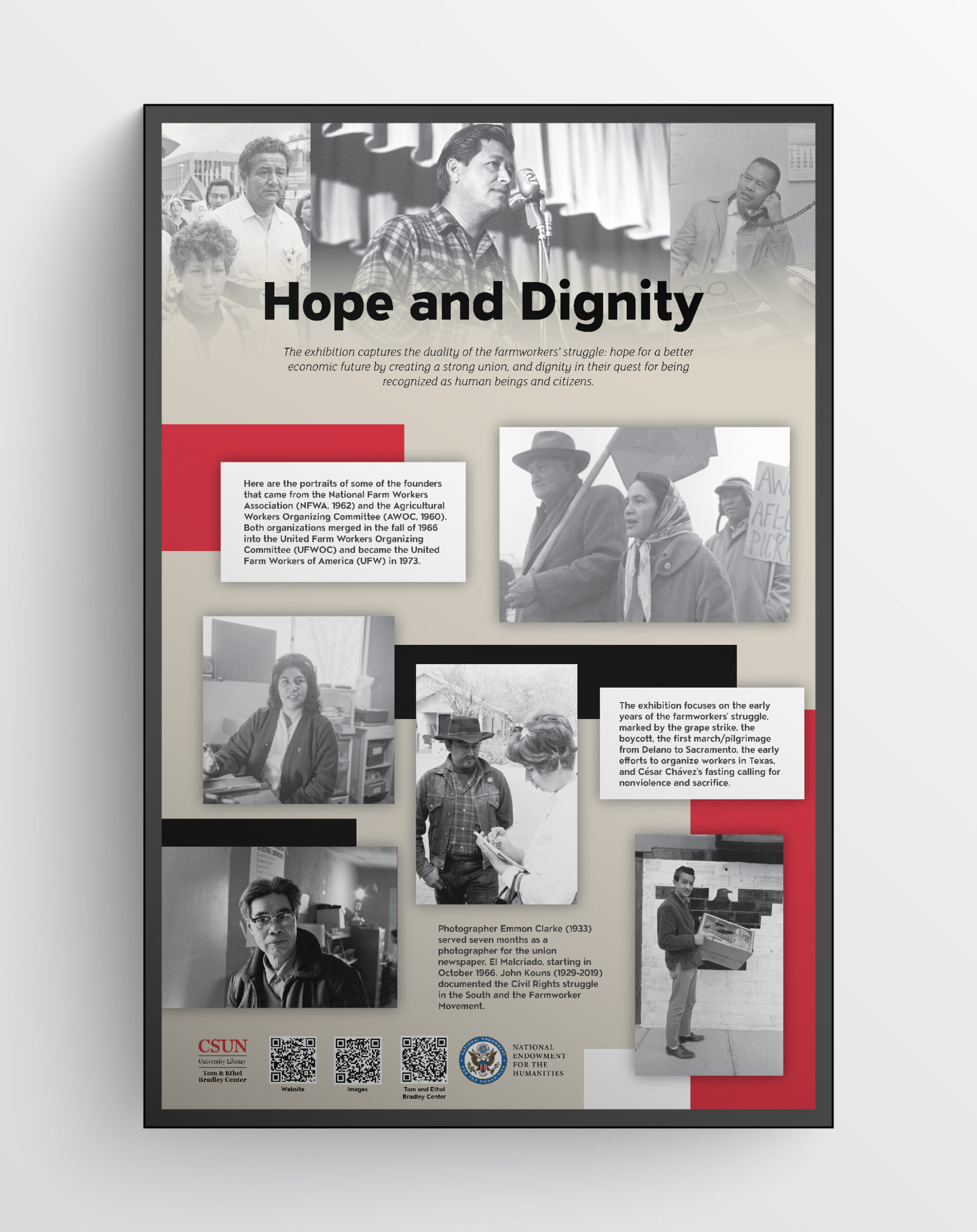
Introduction
The exhibition “Hope and Dignity” captures the duality of the struggle faced by farmworkers: hope for a better economic future for themselves and their families by creating a strong union, and dignity in their quest for being recognized as human beings and citizens.

César Chávez
Chávez’s vision of transforming a labor struggle into a nonviolent Farm Worker Movement helped the union to succeed by mobilizing national support for farmworkers. The grape boycott had an important impact nationally and internationally.
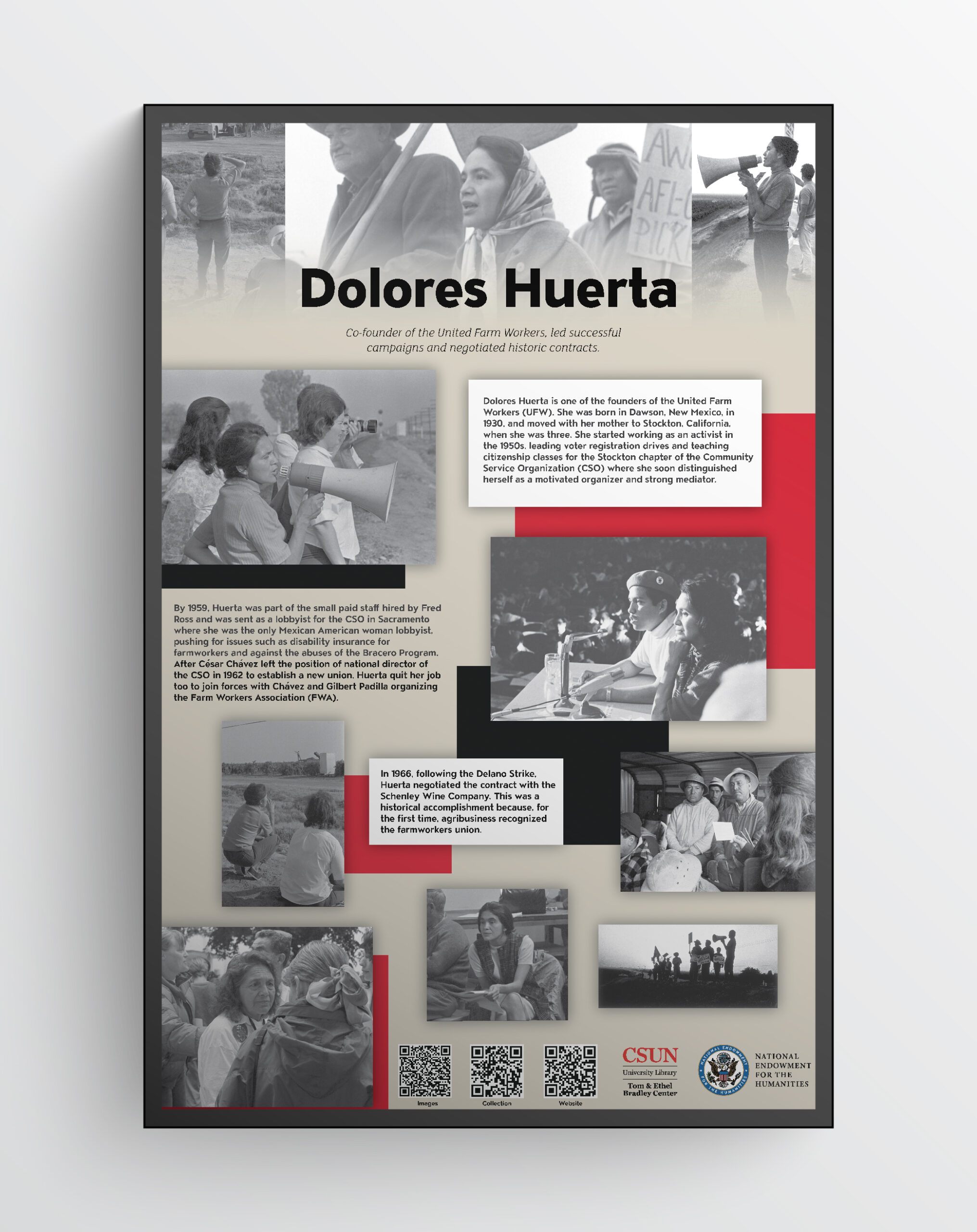
Dolores Huerta
Huerta, one of the founders of the United Farm Workers (UFW), led successful campaigns and negotiated historic contracts. In 1966, for example, following the Delano Strike, Huerta negotiated a contract with the Schenley Wine Company.
.

Huelguistas
The farmworker movement of the 1960s and 1970s forged a broad coalition of workers, students, activists, and religious allies that won most of its early battles leveraging its diversity. It extended collective bargaining rights to farmworkers and created a social movement.
.
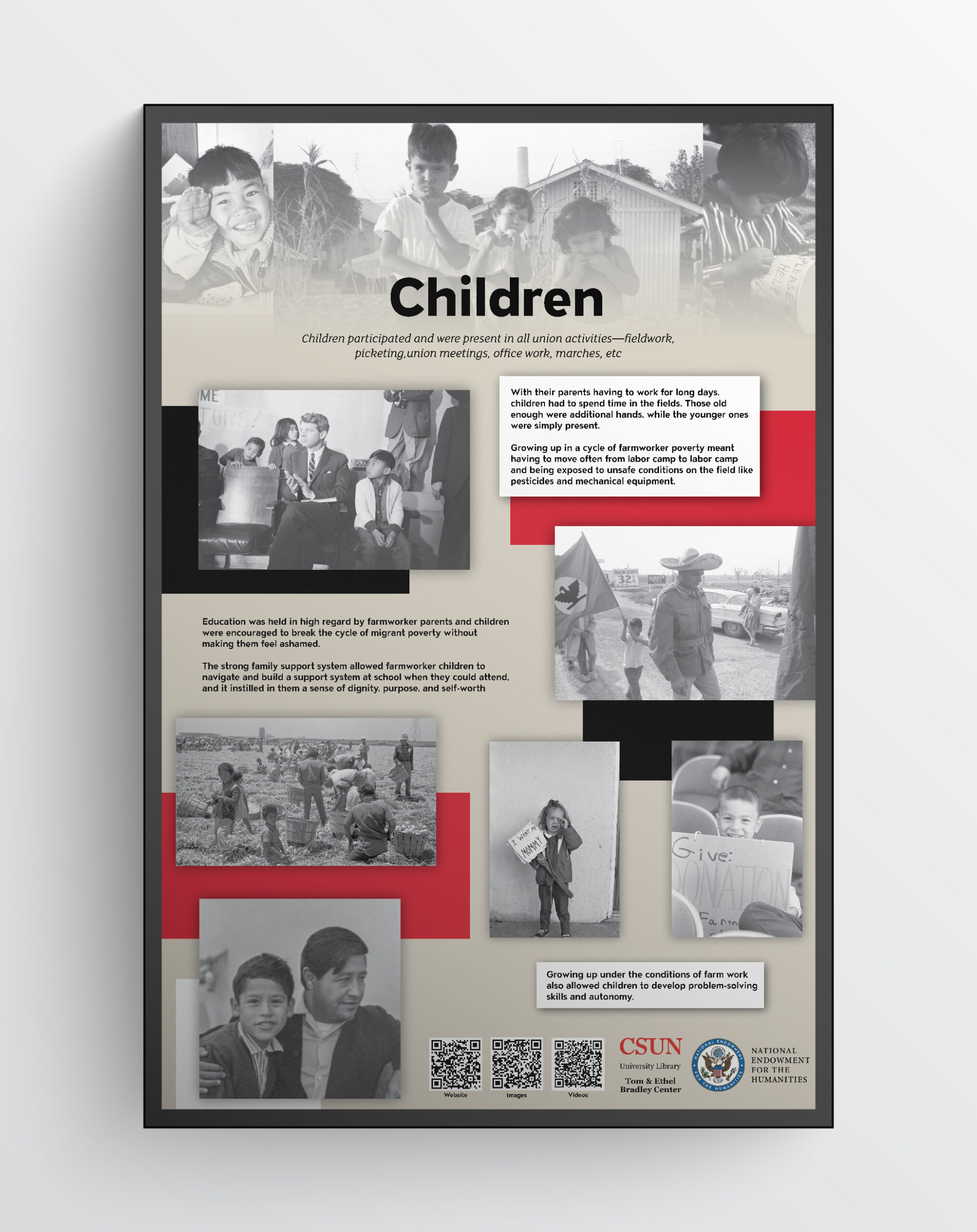
Children
Children participated and were present in all union activities—fieldwork, picketing, union meetings, office work, marches, etc. With their parents having to work for long days, children had to spend time in the fields. Those old enough were additional hands, while the younger ones were simply present.

El Teatro Campesino
El Teatro Campesino mixed the Mexican carpa tradition and the Italian commedia dell’arte, using masks, Mexican Indigenous themes, and Mexican popular comedy. The main characters of the “actos” or skits were: Patroncito, Huelguista, Don Coyote, Esquirol, and Don Sotaco (the helpless worker).
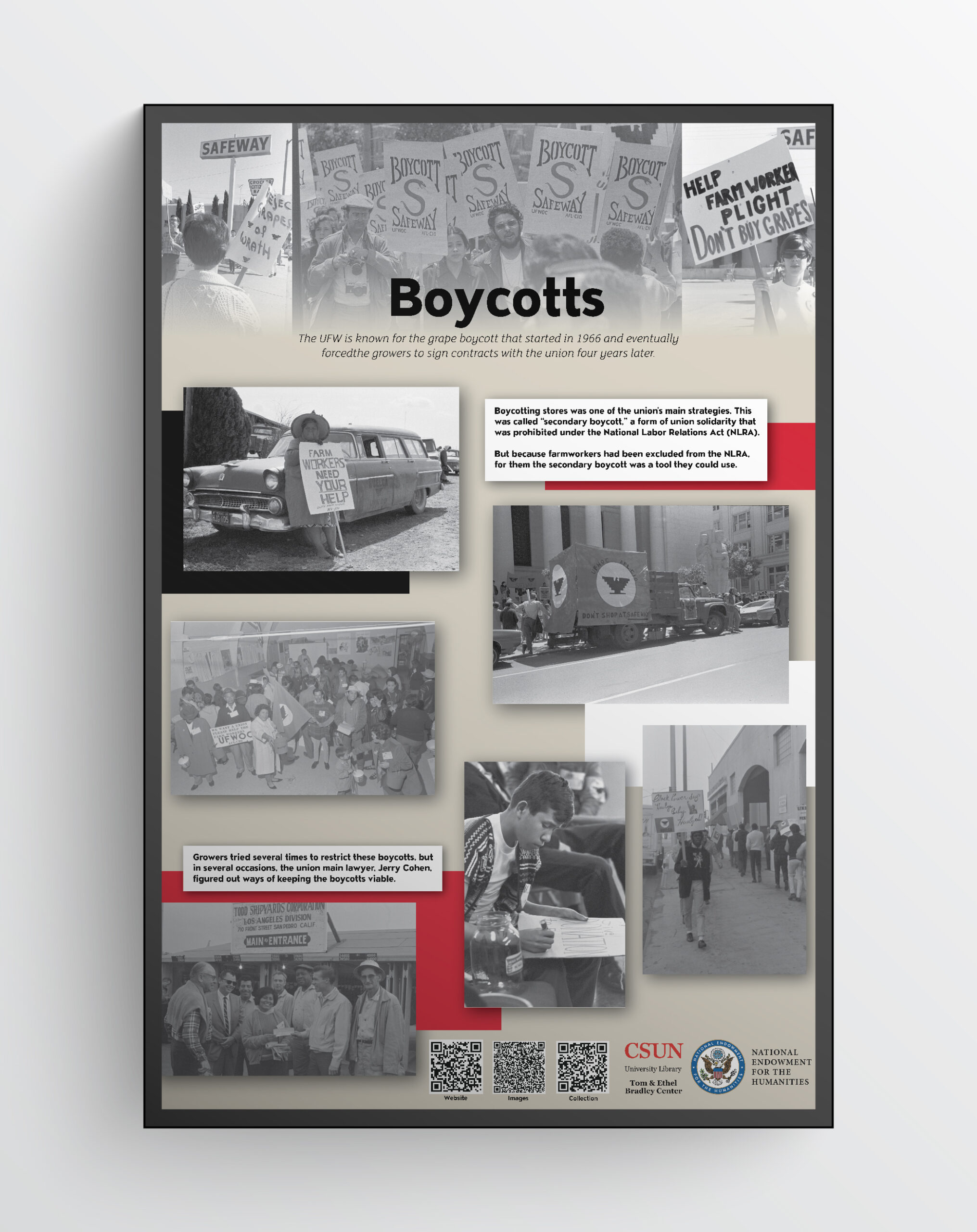
Boycotts
The UFW is known for the grape boycott that started in 1966 and eventually forced the growers to sign contracts with the union four years later. Boycotting stores was one of the union’s main strategies. This was called a “secondary boycott,” a form of union solidarity that was prohibited under the National Labor Relations Act.

Pickets
During the grape strike, the National Farm Workers Association (NFWA) adopted a new tactic called the roving picket line, where activists traveled in car caravans, arrived at grape fields waving flags and banners, and called workers out before moving to the next location.

Fields
Behind all fruits and vegetables in the supermarket hides a world of toil and skill unknown to most consumers. Farmwork depends on accomplished hand coordination, sharp eyes, and physical endurance. It is a collective enterprise—including children—who used to lack the most basic rights, like access to a bathroom or fresh water.

1968 Fast
The fast César Chávez undertook on February 14, 1968, was an atonement for the violence committed by other members of his organization in response to violence against them. He wanted to bring back into focus their fight for justice, prevent further acts of violence by the strikers, and rededicate the movement.

Housing
The housing crisis among farmworkers sparked National Farm Workers Association efforts to close and reform the camps. To keep the inside temperatures bearable during summer, tenants had to find heavy carpets or old mattresses, throw them over the roofs of the hovels, and keep them soaking wet day and night.
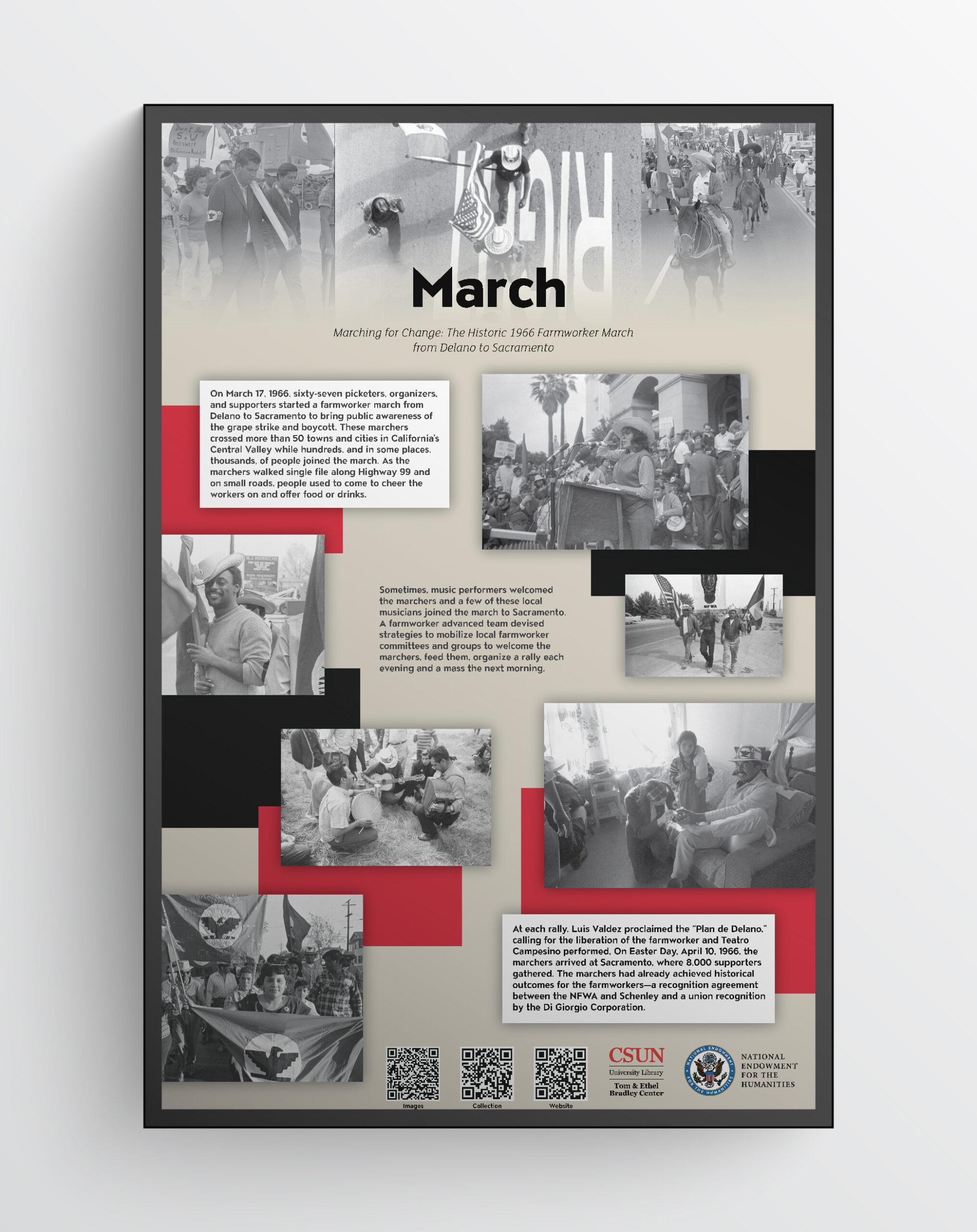
March to Sacramento
On March 17, 1966, sixty-seven picketers, organizers, and supporters started a farmworker march from Delano to Sacramento to bring public awareness of the grape strike and boycott. These marchers crossed more than 50 towns and cities in California’s Central Valley while thousands of people joined the march.
Contact Us
If you plan to print and display this exhibition (in full or only some panels), you can request digital files from us in English and/or Spanish. You will need to print your files. Each panel is 24 x 36″ (61 x 91 cm) and can’t be modified. In your request, identify which panels and in which language you want. Include the name of the school, union, or non-profit organization you represent and your title. You still need to sign a license agreement. We also want you to send us photos of your exhibition. Make your request at least 30 days in advance. We do not accept expedited requests. We reserve the right to decide if your organization qualifies.
Tom & Ethel Bradley Center
California State University, Northridge
18111 Nordhoff Street, Northridge, CA 91330
Phone: (818) 677-1200 / Contact Us

